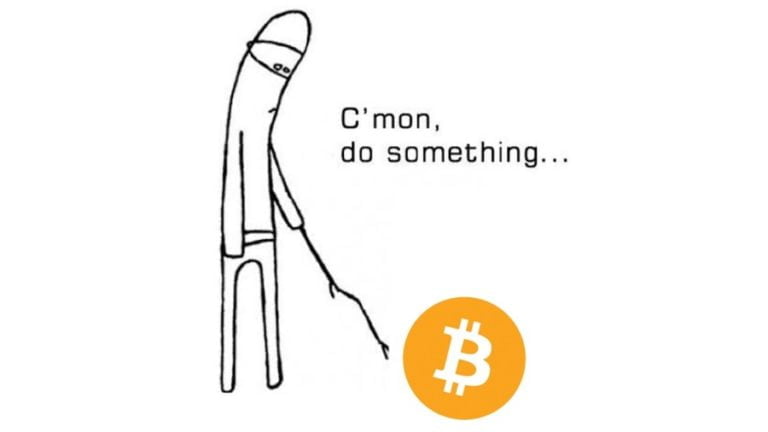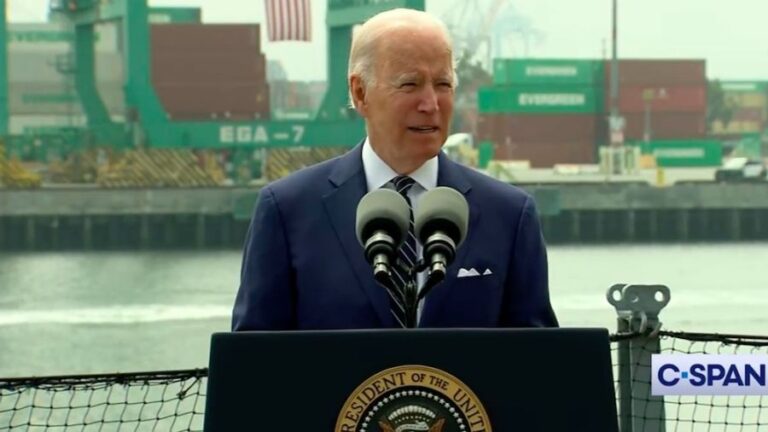Modern Monetary Theory and the Crisis of Capitalism: Part Two
This is the second part of an article. Part one is available here.
Historically, gold emerged as the money commodity. Over the past century and more, fiat money issued by the state has come to replace gold in the daily functioning of the capitalist economy, and above all its financial and credit system, particularly following the removal of the gold backing from the US dollar in August 1971. Under these conditions, the conception has developed that money is merely a convention and has escaped its material foundation.
This is the basis for Modern Monetary Theory (MMT) and the promotion of its illusions that capitalism can somehow be made to function in accordance with the satisfaction of social need. “Free of the constraints that bound us in a gold-standard world,” Kelton writes, “the US now enjoys the flexibility to operate its budget, not like a household, but in the true service of its people.” [The Deficit Myth: Modern Monetary Theory and the Birth of the People’s Economy, p. 37]
She insists that we “deserve to know the truth” that a currency issuing government “can afford to buy whatever is for sale in its own unit of account,” and that “Uncle Sam’s pockets are never empty.” [p. 256]
She even looks to former Fed Chairman Alan Greenspan for support, citing congressional testimony he gave in 2005 in which he said there was “nothing to prevent the federal government from creating as much money as it wants and paying it to somebody.” [p. 182]
It is certainly true that the Fed can issue vast amounts of money without limit. But it cannot create the value that this money supposedly represents. It cannot determine how much of this money needs to be used to buy commodities. Moreover, in issuing paper money, it cannot expand the mass of additional surplus value extracted from the working class in the process of production, which forms the basis and driving force of the capitalist economy.
That is, in the separation of money from the value system, MMT simply sets aside the underlying social relations of the capitalist economy. Money can be created in unlimited amounts. But, in the final analysis, whether in the form of gold or paper money, it must function as the material representative of value.
Recent events underscore this. The massive expansion of money by the US Fed since the COVID-19 pandemic set off a financial crisis has seen the value of the dollar fall sharply, while the price of gold has hit record highs amid concerns over how long the dollar can continue to function as the world currency.
Addressing this issue in a New York Times article at the height of the March crisis, economic historian Adam Tooze noted that while the American economy was weak, the dollar was still the most universally accepted means of payment and a store of value. His argument was essentially circular: the dollar is accepted as a means of payment because it is a store of value and it is a store of value because it is accepted as a means of payment.
How long this might continue and whether the present crisis leads immediately to a crisis of confidence in the dollar and all fiat currencies and a turn towards gold is impossible to say. But there are inherent limits to the creation of endless amounts of money and credit.
Capitalist production, with the development of the credit system, Marx noted, “constantly strives to overcome this metallic barrier, which is both a material and imaginary barrier to wealth, while time and again breaking its head on it.” Money in the form of precious metal, he insisted, remains the foundation from which the credit system “can never break free.” [Marx, Capital Volume III, p. 708, p. 741]
Keynes may have dismissed gold as a “barbarous relic,” but the central banks continue to hold it. The German Bundesbank, for example, describes gold as a “type of emergency reserve which can also be used in crisis situations when currencies come under pressure,” and the Bank of England describes it as “the ultimate store of value, inflation hedge and medium of exchange.”
Kelton maintains that the analysis of MMT is non-partisan and its explanatory power “describes how our monetary system actually works.” This is false because it leaves out the social and class relations on which the capitalist economy is based—the private ownership of the means of production, commodity production for the market, the transformation of labour power into a commodity, and the extraction of surplus value on the basis of these social relations, which is the source of capital accumulation.
This separation, which lies at the heart of MMT’s theory of money, becomes even more apparent when Kelton turns to some of the key social and economic malignancies of the present day and the proposals advanced by MMT to resolve them.
One of its main policy prescriptions is the provision of jobs by the federal government. This would consist of guaranteed employment for everyone who wanted a job at the payment of $15 per hour. It would operate as a stabiliser of the economy in periods of downturn. When an upswing took place federal job employment would be run down as workers returned to the private sector.
Needless to say there is no explanation of why there is unemployment, not to mention the recurring and deepening crises of the capitalist system that produce it. But MMT proposes that crises can at least be ameliorated though work projects financed by the Fed through the press of a computer button to create more money.
The MMT analysis is based on the conception that the function of the economy is to meet the needs of society through the production of goods and services, while providing the population, through the wages system, with the resources to purchase them and sustain itself.
This is a completely fictionalised account. The driving force of the capitalist economy is not the provision of the means of life. Its basis is the expansion of value through the extraction of additional, or surplus, value from the labour of the working class.
The source of this surplus value—the basis, in the final analysis of industrial profit, rent, interest payments and the returns to financial assets—is the difference between the value of the commodity labour power, purchased by capital through the payment of a wage, and the value created by the worker in the course of the working day.
Unemployment does not arise from some unfortunate malfunctioning of the economy, but is integral to the process of the accumulation of surplus value.
Each section of capital is in a constant struggle to appropriate its share of the total surplus value extracted from the working class by driving down its costs of production. One of the chief ways of doing this is by lowering wages through the creation of what Marx called the “reserve army” of labour—the unemployed.
This tendency continually exerts itself, above all in the supposedly best periods of economic expansion. As wages rise under conditions of such expansion, every section of capital is driven by the competitive struggle to introduce new measures to cut the labour force and intensify the exploitation of those who remain in order to increase profits.
The interests of the capitalist class as a whole are enforced by the Fed, along with other central banks, which lift interest rates in order to suppress economic output in order to maintain downward pressure on wages. In the early 1980s, the so-called “restructuring” of the American economy was carried out by the Fed under the chairmanship of Paul Volcker, who lifted interest rates to record highs to close whole sections of industry and create mass unemployment.
Unemployment is not some unfortunate or accidental feature, but is integral to a socio-economic system based on the commodification of labour power. Writing against the Proudhonists and their “tricks of circulation,” Marx noted: “One form of wage labour may correct the abuses of another, but no form of wage labour can correct the abuse of wage labour itself.” [Grundrisse, p.123]
The same issue—the passing over by MMT of the social relations of the capitalist economy—arises when Kelton considers the provision of health care and other vital social services and facilities.
Countering the continued assertions that Medicare is unsustainable, she writes: “All of these arguments are misguided because they are all grounded in the deficit myth. As long as we have health providers and facilities to meet demand, Medicare will be sustainable in the only terms that matter—our nation’s real productive resources.” [p. 173]
It is perfectly true that all the resources exist not only to sustain Medicare, but to expand it, along with many other social services. But their evisceration is not a product of the misguided forms of thinking of policy makers or myths to which they adhere.
It arises from the very structure of the capitalist economy, based on the accumulation of surplus value. Social services provided by the state do not produce surplus value. Rather, they are a deduction from the total mass of surplus value available for appropriation by capital. This is why every economic crisis that threatens profit accumulation is accompanied by the drive to cut social services.
According to Kelton, however, these attacks are not rooted in objective social and economic relations, but arise from outmoded forms of thinking, namely, that the government must balance its budget.
In the manner of a religious preacher, MMT proclaims: “I am the wisdom and the light. Abandon your old ways of thinking and society can advance if not to heaven then at least to a better place.”
Kelton sets out examples of what she calls the “deficit myth,” some of them derived from her participation in the economics team advising Senator Berne Sanders in 2015.
But if, as she maintains, MMT is an explanation of how the monetary system really works, then what is the reason for the persistence of mythology in the face of the insight MMT provides? If a myth persists, then it must have objective social roots. It must serve definite class forces. It cannot be put down to ignorance any more than the persistence of religion can be so explained.
This issue can be probed and the reason for the attacks on health and other services revealed by considering the situation that would prevail if the policy makers provided an objective explanation for their measures.
What would take place if they told Congress that the reason social services spending must be cut and there is “no money” to fund it is because such spending is a deduction from the surplus value extracted from the working population needed to maintain and increase the profits of Wall Street?
If such a scientific explanation, derived from the actual workings of the capitalist economy, were put forward under conditions of rising class tensions, it would fuel a political crisis leading to the growth of anti-capitalist and socialist sentiment.
We are by no means suggesting that congressional representatives are aware of the real workings of the capitalist economy any more than is Kelton. But their invocation of the necessity of the government to cut spending in order to balance its budget, like a household, plays a definite political role rooted in the class structure of capitalism. It is the ideological cover for the services they render to Wall Street.
MMT plays its part in this system of obfuscation by diverting attention from the underlying objective processes at work, and focusing on the conceptions of politicians and policy makers.
It advances the perspective that the capitalist economic and political order, which enables the vast accumulation of wealth in the hands of a financial oligarchy at the expense of society, can be miraculously transformed to benefit the people if only policy makers can be made to see the light it supposedly provides.
In Kelton’s presentation, MMT can not only obliterate the class conflicts and contradictions within the US, it is able to transform American imperialism from a predatory power, increasingly turning to military means to maintain its global dominance and threatening to spark another world war, into a benefactor of the world’s people.
It is necessary to recognise, she writes, “that the US government can supply all the dollars our domestic private sector needs to reach full employment, and it can supply all the dollars the rest of the world needs to build up their reserves and protect their trade flows. Instead of using its currency hegemon status to mobilise gold reserves for its own narrow interests, the US could lead the effort to mobilize resources for a global Green New Deal, keeping interest rates low and stable to promoting global economic tranquillity.” [p. 151]
It is said there is really nothing new under the sun, and MMT, as advanced by Kelton, is very much old wine in new bottles. It is the modern-day version of theories that have been advanced in previous periods of capitalist crisis to divert working people from the real tasks at hand. Not surprisingly, it has been seized on by sections of the pseudo-left such as Democratic Socialists of America member and congressional representative Alexandra Ocasio-Cortez, who maintains that MMT must be “a large part of the conversation.”
The way forward is not the false perspective of some reform of the capitalist system via the “tricks of circulation,” but its overthrow by the working class to establish a workers’ government in order to open the way for the establishment of a democratically controlled and organised socialist economy in which the vast productive forces are used to meet human need.







